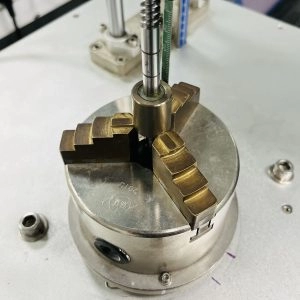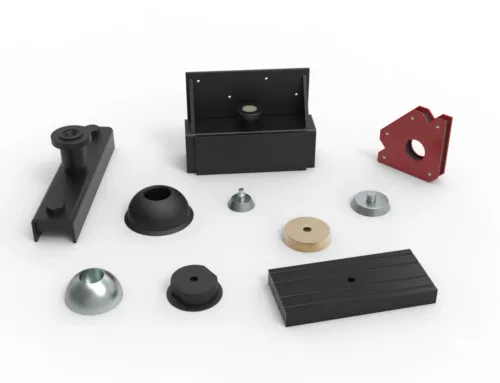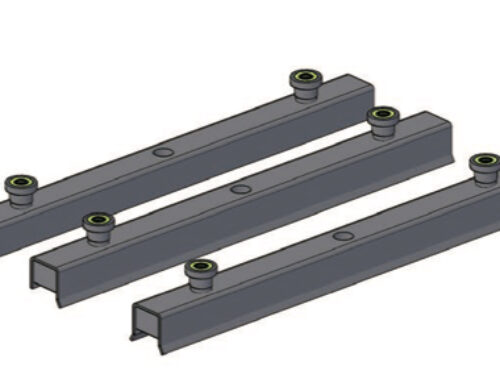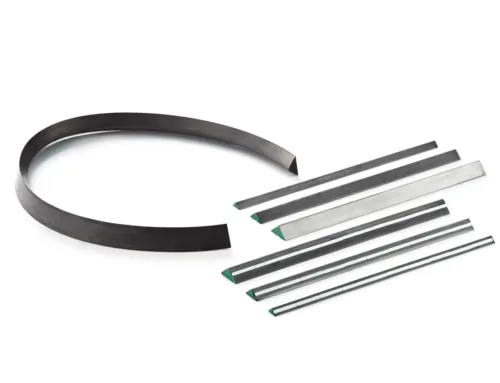Fundamentals of Magnetic Materials
Magnetic materials are essential in motor technology because they directly affect how motors generate force and perform. At the core, these materials have unique magnetic properties like magnetization, coercivity, and retentivity.
- Magnetization is how much a material can become magnetized when exposed to a magnetic field.
- Coercivity refers to a material’s resistance to losing its magnetization once the magnetic field is removed.
- Retentivity is a measure of a material’s ability to retain magnetization over time.
Magnetic materials are classified into four main types:
- Ferromagnetic materials have strong magnetization and high retentivity. They are commonly used in permanent magnets for motors.
- Ferrimagnetic materials exhibit similar magnetic ordering as ferromagnetic but with unequal opposing magnetic moments.
- Paramagnetic and diamagnetic materials show only weak or negative responses to magnetic fields and generally play a minor role in motor applications.
Understanding these magnetic properties is crucial for motor design. The choice of magnetic materials influences motor efficiency, torque, speed, and thermal behavior—making them a foundation for advanced motor technology.
Types of Magnetic Materials in Motor Technology
In motor technology, choosing the right magnetic materials is key to performance and efficiency. Here’s a quick look at the main types used:
Permanent Magnets
- Neodymium (NdFeB): High energy product, excellent for powerful, compact motors like those in EVs and drones.
- Samarium Cobalt (SmCo): Great temperature stability and corrosion resistance, used in demanding environments.
- Ferrite Magnets: Cost-effective with good corrosion resistance, but lower magnetic strength compared to rare-earth magnets.
Soft Magnetic Materials
- Silicon Steel: Widely used in motor cores and transformers for its low energy loss and good magnetic permeability.
- Nickel-Iron Alloys (Permalloy): Known for very low coercivity and high permeability, ideal for alternating current applications.
Magnetic Composites and Advanced Materials
- Combinations of powders and binders designed to balance magnetic performance with ease of manufacturing and mechanical strength. Used increasingly in specialized motor designs.
Comparing Key Material Performance
| Material Type | Energy Product (MGOe) | Temperature Stability | Corrosion Resistance | Common Use |
|---|---|---|---|---|
| NdFeB | 35-55 | Moderate | Low (needs coating) | High-performance motors |
| SmCo | 20-30 | High | High | Harsh environments |
| Ferrite | 3-5 | High | High | Low-cost motors |
| Silicon Steel | N/A | Moderate | Moderate | Motor cores |
| Nickel-Iron Alloys | N/A | Moderate | Moderate | Precision components |
Selecting the right magnetic material depends on motor type, operating conditions, and cost considerations. For a deeper understanding of magnetics basics, check out what is a magnetic moment and magnetic anisotropy.
Application of Magnetic Materials in Different Motor Types
Magnetic materials play a crucial role across various motor types, directly impacting performance and efficiency.
Brushless DC Motors (BLDC)
BLDC motors rely heavily on permanent magnets, especially NdFeB magnets, for their strong magnetic fields and high energy density. These magnets allow BLDC motors to deliver high torque and smooth operation, making them popular in electric vehicles, drones, and home appliances.
Induction Motors
Induction motors typically use soft magnetic materials like silicon steel and nickel-iron alloys for their stator and rotor cores. These materials have low coercivity and high permeability, which help reduce energy loss and improve efficiency during operation. They’re ideal for heavy-duty industrial applications due to their durability and cost-effectiveness.
Synchronous Motors
Synchronous motors often combine soft magnetic cores with permanent magnet rotors to boost efficiency and power density. The use of rare earth magnets allows for better torque control and reduces the size of the motor. These motors are widely used in robotics, aerospace, and precision machinery.
Emerging Motor Technologies
Advanced magnetic materials, including magnetic composites and rare-earth-reduced alloys, are making waves in newer motor designs. They offer improved temperature stability, corrosion resistance, and environmental benefits. Innovations like these are critical for next-gen electric vehicles and smart manufacturing.
| Motor Type | Key Magnetic Materials | Benefits | Typical Uses |
|---|---|---|---|
| BLDC Motors | NdFeB permanent magnets | High torque, compact size | EVs, drones, appliances |
| Induction Motors | Silicon steel, Ni-Fe alloys | Cost-effective, durable | Industrial drives, pumps |
| Synchronous Motors | Rare earth magnets, soft cores | Precision control, compact | Robotics, aerospace |
| Emerging Technologies | Magnetic composites, advanced alloys | Stability, eco-friendly | Electric vehicles, smart tech |
How Magnetic Materials Influence Motor Performance

Magnetic materials play a huge role in making motors run better and last longer. Choosing the right magnetic material can boost motor efficiency significantly. For example, using high-quality permanent magnets like NdFeB in brushless DC motors helps increase energy conversion and cut power loss. This means motors use less electricity for the same output.
Magnetic materials also affect torque and speed. Stronger magnets and soft magnetic materials with low core losses ensure smoother torque delivery and higher speed capabilities. This is especially important in electric vehicles and industrial applications where consistent performance matters.
Thermal management is another key factor. Magnetic materials with good temperature stability reduce performance drops when the motor heats up during operation. Materials like samarium cobalt stand out here, maintaining strength at higher temperatures and preventing overheating issues.
Durability counts in real-world conditions too. Motors face vibration, humidity, and temperature swings, so magnetic materials must resist corrosion and mechanical stress. Soft magnetic alloys and coated magnets improve operational stability, extending motor life and lowering maintenance needs.
In sum, the right magnetic materials directly impact motor efficiency, torque, speed, thermal behavior, and durability—key factors for reliable, high-performing motors in the US market.
Manufacturing Considerations and Challenges
Sourcing high-quality magnetic materials is a major factor in motor manufacturing, especially in the U.S. market where reliability and performance matter most. China remains a key supplier of rare earth magnets like NdFeB and Samarium Cobalt, but supply chain reliability can be a concern. At NBAEM, we focus on maintaining strong partnerships and transparent logistics to ensure steady delivery without compromise.
When it comes to processing, NBAEM uses advanced shaping and cutting techniques tailored to different magnetic materials. Whether working with hard permanent magnets or soft silicon steel, precise control over size, surface finish, and magnetic orientation is critical. This helps motors achieve the best magnetic performance and consistent efficiency.
Quality control is another priority. NBAEM follows strict inspection protocols, including magnetic property testing and material certification, to meet U.S. industry standards. This ensures every batch performs reliably in demanding motor applications. Certifications relevant to motor-grade materials give customers confidence in durability, temperature stability, and corrosion resistance.
Innovations and Trends in Magnetic Materials for Motors

brushless DC motor
The motor industry is rapidly evolving, and so are the magnetic materials powering these motors. High-performance magnets, especially those designed for electric vehicle (EV) motors, are leading the charge. These magnets deliver higher energy density and better temperature stability, essential for improving EV motor efficiency and reliability.
At the same time, there’s a strong push toward environmentally friendly options. Rare-earth-reduced magnets are gaining traction, reducing dependence on scarce elements like neodymium and dysprosium without sacrificing performance. This shift helps address both cost and supply chain risks.
Recycling and sustainability are becoming key priorities too. More companies are innovating ways to recover valuable magnetic materials from old motors and electronic waste, cutting down on raw material demand and environmental impact.
China plays a central role in these trends, driving much of the global innovation. NBAEM, as a leading magnetic material supplier from China, is at the forefront—developing advanced magnetic alloys and composites that balance performance, cost, and sustainability. Their continuous research and manufacturing improvements support U.S. motor manufacturers seeking reliable, cutting-edge magnetic materials.





[…] Use this quick checklist to narrow down your motor choice based on your performance and cost targets. For more on magnet materials and their use in motors, check out Magnetic Materials in Motor Technology . […]
[…] Being thorough in these checks protects your pump’s long-term operation and lowers maintenance risks. For more on quality standards and magnet types in magnetic technologies, check out our detailed resource on magnetic materials in motor technology. […]